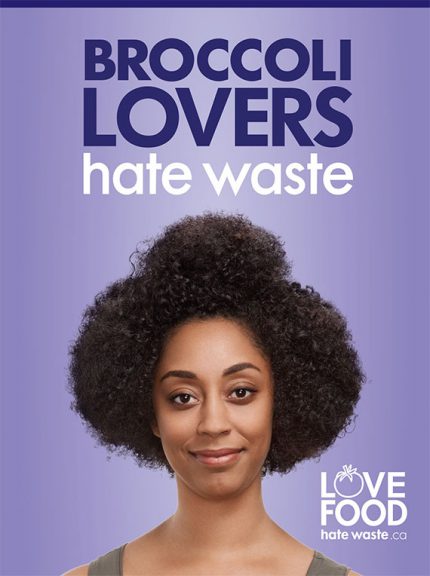Food Waste Series P: The Future of Food Waste Reduction
Posted: November 2, 2016
Categories: GoodFoodBites / News from Sustain Ontario
Introduction: Why Food Waste?
Globally, around one third of all food produced is lost or wasted. Canadians currently waste $31 billion worth of food every year, with consumers responsible for almost 47% of the value. Why do we throw away so much food? It turns out that cultural practices, habits and institutionalized social norms play a big part in why we waste food.
The following is part of a five part series about food waste in which we explore how Canadians dealt (and deal) with food in the past, present and future.
The Future of Food Waste
With new research, start-ups, apps, campaigns and municipal initiatives appearing what seems like every day, the food waste problem is being tackled with zeal. The issue has sparked creativity, but also some debates about the best method to deal with problem. We’re dealing with food, after all, and who doesn’t love food?
Source: Love Food Hate Waste UK’s Campaign
Before going forward, we need to look back. Where have food waste reduction campaigns been effective? In truth, most campaigns are very new and evaluations are hard to come by – so far. The project that has inspired many, UK’s Love Food  Hate Waste messaging campaign, was designed by the Waste and Resources Action Programme (WRAP). It focused on raising awareness of the issue by offering simple everyday solutions and engaging with the community to influence behaviours. Since its UK-wide launch in 2007, avoidable household food waste was cut by 21% and has saved consumers 13 billion pounds.
Hate Waste messaging campaign, was designed by the Waste and Resources Action Programme (WRAP). It focused on raising awareness of the issue by offering simple everyday solutions and engaging with the community to influence behaviours. Since its UK-wide launch in 2007, avoidable household food waste was cut by 21% and has saved consumers 13 billion pounds.
Since then, the campaign has inspired others, such as Vancouver’s own Love Food Hate Waste project. This campaign aims to change habits by encouraging consumers to change just one thing – to start with. The goal is to facilitate a regional forum where individuals can come together to share their solutions and tips for reducing waste. Not only does the campaign emphasize cost savings, but it also builds on residents’ positive attitude towards food. With the majority of people asserting that they enjoy cooking and preparing food and that they are confident in preparing meals with random ingredients, convincing residents to throw out less is a promising endeavour.
Source: LFHW Metro Vancouver
Other large scale campaigns and programs have recently launched in the US, in response the country’s national goal of reducing food waste by 50% by 2030. The EPA’s “Food: Too Good to Waste” implementation guide and toolkit aims to teach local governments and community organizations how to reduce food waste in their community.
Save the Food (see video below), another nation-wide campaign launched by the National Resources Defence Council and the Ad Council, provide tips about how to reduce waste at home.
Real Foodies Compost, another campaign in San Francisco, deals mostly with the end of pipe solution, providing tips about how to prepare meals and where to put the leftover waste.
Source: Save the Food Campaign by the Ad Council
Unlike the United States, Canada does not yet have national legislature in place to aid in the reduction of food waste. Until then, regions, municipalities and communities are tackling the problem on a smaller scale. We would be remiss not to mention local efforts to reduce waste here in Ontario:
York Region’s Good Food Program was launched to reduce food waste and to promote healthy eating. The program’s messaging campaign educates residents about nutritious and practical meal planning, food storage and best before dates, food safety, eating leftovers and saving costs.
The Region of Peel’s new Peel Challenge encourages residents to reduce their food waste by the equivalent of a watermelon this year. To encourage residents to save up to $112 each month in wasted food, the campaign suggests ways to plan smart, buy smart and store smart.
WasteNot Farm’s Green Bins Growing service picks up and recycles food waste from workplaces in the GTA. The farm’s worms turn the leftovers into high quality worm castings. In return, clients receive a portion of the castings and regular reports highlighting their positive environmental impact.
Second Harvest is the largest food rescue organization in Canada. Since 1985, the organization has rescued and delivered over 100 million pounds of fresh, healthy food and prevented the release of 50 million pounds of greenhouse gas equivalents.
Not Far from the Tree is another Toronto based recovery organization. This non-for-profit picks fruit from the urban trees of homeowners. The harvest is then split between the homeowner, the volunteers and local food banks, shelters or community kitchens.
For more information on food waste, check out food waste resources in our Greenhouse. Do you know of a great resource that we don’t have? Let us know!
Missed our previous post on The Food Waste Hierarchy? Check it out here.
Sources:
EPA – “EPA and USDA Join Private Sector, Charitable Organizations to Set Nations First Goals to Reduce Wasted Food”, Food: Too Good to Waste Implementation Guide and Toolkit
Metro Vancouver – “Broccolli Lovers Hate Waste” Pamphlet, About Love Food Hate Waste Vancouver
